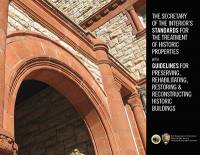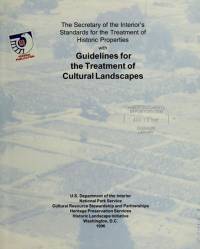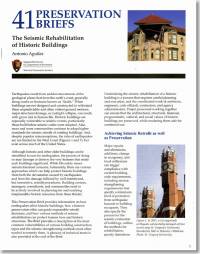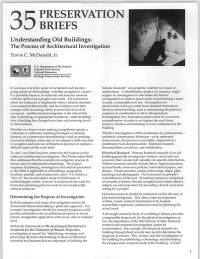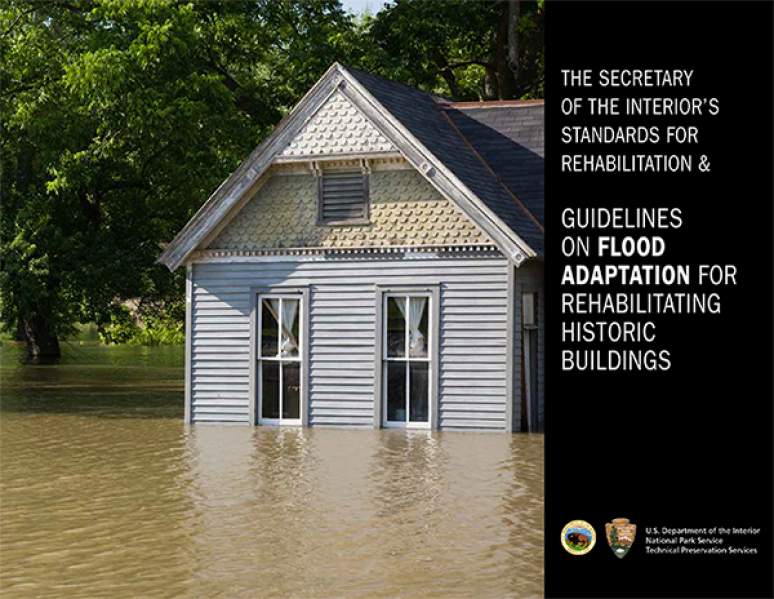
The goal of the Guidelines on Flood Adaptation for Rehabilitating Historic Buildings is to provide information about how to adapt historic buildings to be more resilient to flooding risk in a manner that will preserve their historic character and that will meet The Secretary of the Interior’s Standards for Rehabilitation. These guidelines should be used in conjunction with the Guidelines for Rehabilitating Historic Buildings that are part of The Secretary of the Interior’s Standards for the Treatment of Historic Properties with Guidelines for Preserving, Rehabilitating, Restoring & Reconstructing Historic Buildings. Like the Guidelines for Rehabilitating Historic Buildings , these guidelines are intended to focus primarily on historic buildings and their site and setting.
The treatments described in the Guidelines may be considered as means for preserving historic properties located in floodplains and making them more resilient to flooding hazards. While many of these treatments can be undertaken with minimal effects on the historic character of a property, some may require more change than would normally be acceptable in other contexts. Consequently, only buildings with a demonstrable risk of flooding should be using the adaptive treatments described in the Guidelines. Adaptation treatments should reduce the risk of flood damage as much as possible, but should do so without destroying significant historic materials, features, or spaces.
VII ACKNOWLEDGEMENTS
02 FOREWORD
THE SECRETARY OF THE INTERIOR’S STANDARDS
06 Introduction to the Standards
GUIDELINES FOR REHABILITATION
08 Introduction to the Guidelines
09 Using the Guidelines on Flood Adaptation
12 Assessing the Risk and Selecting an Adaptation Treatment
TREATMENT GUIDELINES ON FLOOD ADAPTATION
16 Planning and Assessment for Flood Risk Reduction
26 Temporary Protective Measures
32 Site and Landscape Adaptations
40 Protect Utilities
46 Dry Floodproofing
56 Wet Floodproofing
68 Fill the Basement
74 Elevate on a New Foundation
100 Elevate the Interior Structure
108 Abandon the Lowest Floor
114 Move the Historic Building
OTHER TREATMENTS
122 Unconventional Adaptations and Innovative Techniques
126 Demolition
CASE STUDIES
127 1: Dry Floodproofing a Wisconsin Commercial Building
131 2: Wet Floodproofing a New Jersey Cottage
135 3: Elevating a House on the Mississippi Gulf Coast
139 4: Combined Flood Adaptations to Protect a Rhode Island Livery
This would be a valuable guidebook for architects, engineers, contractors, construction workers, property managers, and others involved in the rehabilitation of historic buildings.


